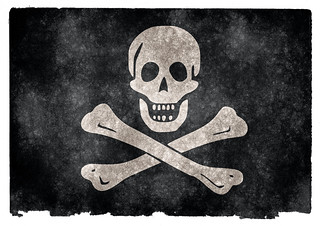 “Yeah, mate, I know, but you’ve got to keep on moving.” These were the words from Mount Everest’s Basecamp to Rob Hall, an expedition guide who was out of reach of rescuers. Rob had radioed that his hands were freezing and that he had to de-ice his mask. Basecamp, searching for ways to get Rob to safety, responded, “That’s good, you’ve got to get that mask working; the sun’s going to come up, you know; you can get warmer, you can get moving.” Alone and having expended all his energy to assist a fatigued client who did not survive, Rob now needed assistance himself. After determining that Rob was taking shelter in a depression at an outcrop just below the south summit, Basecamp implored, “All right, you can do this. You’ve just got to pull yourself out of that dip and slide the rest of the way. You’ve just got to come on down, mate. Come on down.”
“Yeah, mate, I know, but you’ve got to keep on moving.” These were the words from Mount Everest’s Basecamp to Rob Hall, an expedition guide who was out of reach of rescuers. Rob had radioed that his hands were freezing and that he had to de-ice his mask. Basecamp, searching for ways to get Rob to safety, responded, “That’s good, you’ve got to get that mask working; the sun’s going to come up, you know; you can get warmer, you can get moving.” Alone and having expended all his energy to assist a fatigued client who did not survive, Rob now needed assistance himself. After determining that Rob was taking shelter in a depression at an outcrop just below the south summit, Basecamp implored, “All right, you can do this. You’ve just got to pull yourself out of that dip and slide the rest of the way. You’ve just got to come on down, mate. Come on down.”
The film Everest depicts this heartbreaking communication as well as the next day’s tender farewell between Rob and his pregnant wife patched in from home. As imperiled as Rob was by an immobilizing blizzard, words of hope nevertheless permeated the radio waves. Not only did Basecamp and Rob’s wife send encouragement to try to keep Rob alive, but Rob himself conveyed hope to his wife when he rasped, “I love you–sleep well, my sweetheart–please don’t worry too much,” as he signed off before his second and permanent night a hundred meters below the mountain’s summit.
Tie in to the rope of hopeful thinking
Hope is more than just wishful thinking. To use mountain climbing as a metaphor, hopeful thinking involves choosing your desired destination, believing you are capable of selecting a route to reach that destination, and having the self-determination to persevere in your traversal of that route. These three elements are described by C.R. Snyder with hope theory:
- Goals (destinations) – Knowing where you want to go
- Pathways (routes) – Staying flexible and figuring out alternative ways to get to your goal
- Agency (determination) – Believing in yourself to achieve your goal and tolerating disappointments along the way
You can think of hope theory as a climbing rope that you can tie in for safety by setting a goal to pursue, visualizing different plans to guide you there, and resolving to make strategic changes to stay on course as you overcome obstacles and challenges.
Route selection for intellectual property licenses
Although scaling the world’s highest peak is an extreme example, it can inspire us to apply hope theory to negotiating IP licenses for technology transactions. In its most simplistic form, IP licensing can be thought of as paying for a permission. For example, a patent license can grant permission to use a patented invention in exchange for a royalty payment. In negotiations, both parties to an IP license are determining the valuation of the IP, as can be seen from the equation: permission = payment.
Unlike Mount Everest, which has few routes to the summit, you have the flexibility to define permissions and payments your way to meet your business aspirations. For example, you can define how the IP will be implemented (field of use), how long a license will last (duration), and what will happen to new ideas (improvements). In other words, there are many routes to an IP deal that gets you to your licensing destination.
Licensing flexibility is good news because IP is meant to foster innovation, and you can be innovative with each IP license. To use hope theory’s terminology, there are many pathways in the terms and clauses of an IP license, and your passion for innovation gives you agency to propel you toward your goal of an IP deal. So, stay hopeful in negotiating a technology transaction as you confidently assess workable routes to making an innovative deal that grows your business.
Pack hope theory to reach ambitious heights
Mount Everest is unattainable for most of us, but if you enjoy hiking in nature, then it is useful to follow the Survival Rule of Threes. Basically, this rule can help set priorities when lost in the wilderness. The numeral three is a memory aid for the rule that you won’t survive three minutes without air, three hours without shelter from extreme cold or heat, three days without water, or three weeks without food. We can add one more component to this rule: you won’t survive three seconds without hope. Whether you are navigating wilderness hikes or negotiating technology transactions, start your journey to success by packing hope theory’s goals, pathways, and agency with your gear.
Image: “Everest” (CC BY 2.0) by Mário Simoes.
Source: Snyder, Charles R. Handbook of Hope: Theory, Measures and Applications. Academic Press, 2000.

 Family meetings are more than just a way to promote cooperation and joint decision making.
Family meetings are more than just a way to promote cooperation and joint decision making.  In Gilbert and Sullivan’s comic opera
In Gilbert and Sullivan’s comic opera  Street photographers have an eye for seeing reality from new perspectives. Just as film is exposed to light, street photographers can teach us how to expose our understanding to the reality of our conflicts. The documentary
Street photographers have an eye for seeing reality from new perspectives. Just as film is exposed to light, street photographers can teach us how to expose our understanding to the reality of our conflicts. The documentary  There is a saying that dogs don’t bark at parked cars. It’s funny how a dog will chase what’s in motion and ignore what is standing still. In reality, just because something is moving doesn’t mean it deserves attention. In conflict, the issue you are facing may be the equivalent of a moving car. But you might want to consider whether the parked car of an emotion might also deserve some thought. After all, an emotion may actually be what’s driving your decisions.
There is a saying that dogs don’t bark at parked cars. It’s funny how a dog will chase what’s in motion and ignore what is standing still. In reality, just because something is moving doesn’t mean it deserves attention. In conflict, the issue you are facing may be the equivalent of a moving car. But you might want to consider whether the parked car of an emotion might also deserve some thought. After all, an emotion may actually be what’s driving your decisions.